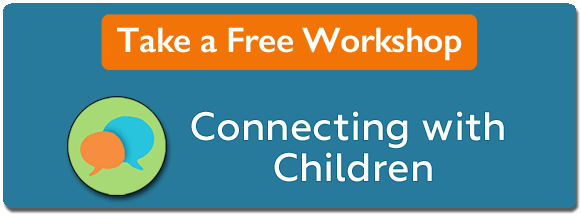
The most important help to life we can offer to our children is to provide opportunities to develop concentration and independence.
With the development of concentration and independence, our children can take these strengths and apply them to any activity they wish to pursue.
With concentration and independence a subset of other skills comes along, accomplishments that include:
- critical thinking,
- problem solving,
- emotion regulation,
- use of the imagination,
- reflection,
- abstract vocabulary, as well as
- the ability to act with intention and responsibility.
Our children’s days (and our own) are filled with constant interruptions from electronic media–television, video games, computers, Internet, cell phones, music devices, etc. The way our time is structured for school, jobs and home acts as punctuated roadblocks to the development of concentration and independence.
Observing a high school Spanish class of 40 students helped me see the influence that electronic devices are having on our children. This high school class met in the school library for a test.
Here’s what the 50-minute session looked like:
Each student checked out a laptop computer while being told in Spanish how to log onto the test. This took 15 minutes. Cell phone texting occurred with 38 of the 40 students during the first 15 minutes of class, and chatting with neighbors occurred in English until the 30-minute mark. Most students worked with their computers for 10 minutes, and then text messaging on cell phones began again. At the 45-minute mark, laptops were returned to the shelves in less than 5 minutes. The bell rang, and in less than one minute all students were out of the library. As they stood up from their chairs, students began talking on their cell phones as they walked to their next 50-minute class time.
During this class I observed less than 10 minutes of concentrated activity for this group of students.
As I considered the state-of-the-art library, the 40 laptops, the teacher and all the resources that went into that 10-minute ”learning experience,” if one dared call it that, I felt a tremendous sadness.
Sadness for the students who never have learned to love learning because they lack the skills that come with concentration and independence.
Sadness for the teacher who made no personal connection to her students.
Sadness for the taxpayers who spend hundreds of thousands of dollars to create a learning environment where students worked for 10 minutes and got their electronic media fix the other 50 minutes of the hour.
Sadness for the people addicted to being constantly interrupted by their cell phones and, in the process, not being able to appreciate and engage with the people, environment and experience right before them.
When I read that my elected Congressman had ”Twittered” 22 times during the State of the Union address, this sadness turned to anger. Anger that as a taxpayer I am paying for students and elected officials to ”Twitter” their lives away. As a learning development specialist, I am outraged that we are allowing people to build the concentration and independence of a gnat.
I’m in a twitter.
”A mind is a terrible thing to waste,” goes the well-known ad. What are we doing to our children and to ourselves with our incessant instant messages, our constant phone calls and 140-character advertisements?
We must give our children the opportunities to develop concentration and independence.
We must protect children’s opportunities to develop concentration and independence.
Are these electronic devices developing essential qualities for human development?
If not, we need to take a long hard look at what our electronic-all-the-time lifestyles are creating.
Otherwise, we might end up a nation of twits. Perhaps we already are.
(This post was originally published August 2009. Has anything changed?)

